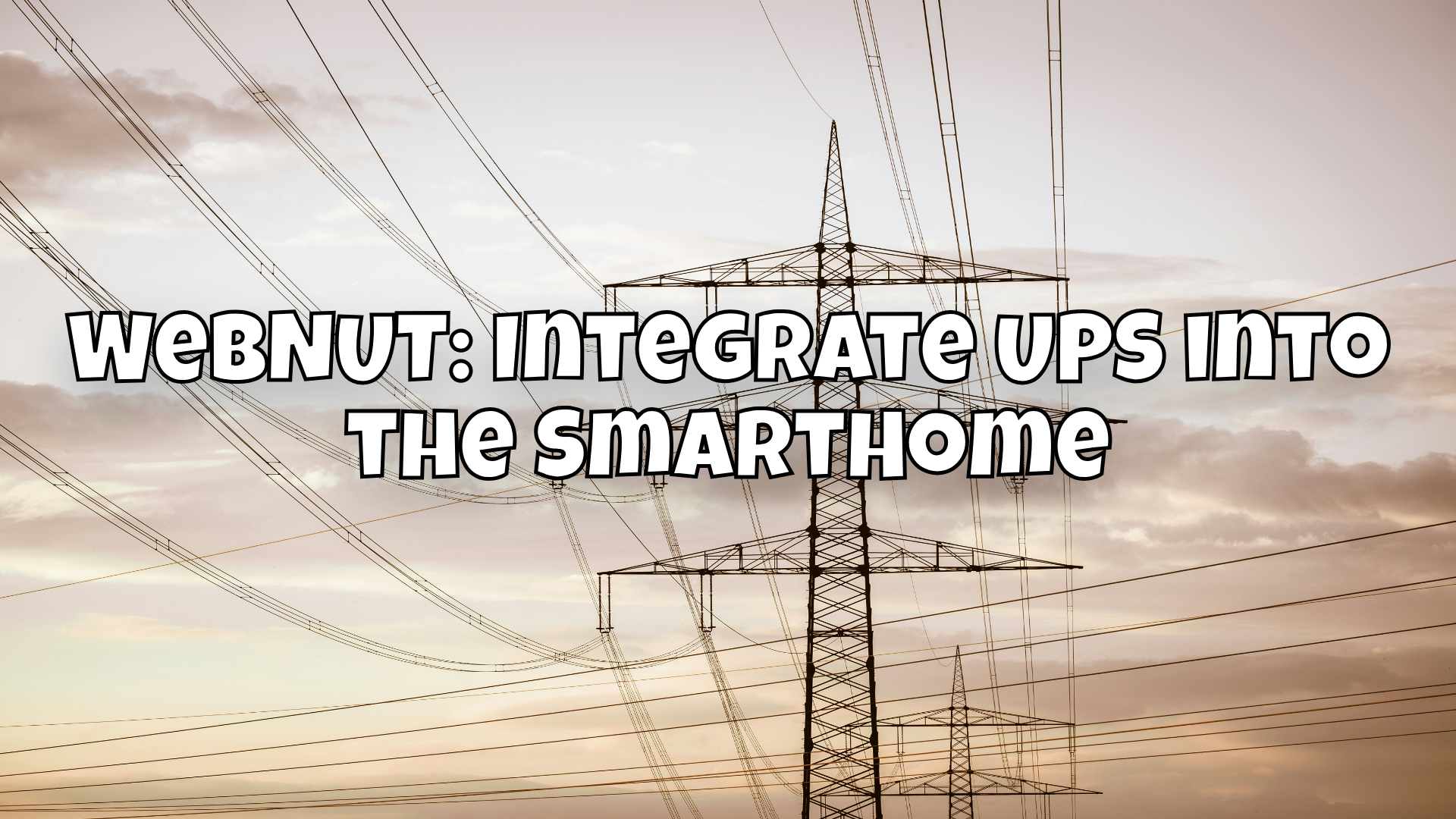WebNUT: Integrate UPS into the SmartHome
Learn how to install and configure WebNUT in Docker and integrate it into HomeAssistant to monitor your UPS devices in your smart home. 🏠

In this article, I will show you how to install and configure WebNUT in Docker and then integrate it into HomeAssistant. WebNUT is a web interface for Network UPS Tools (NUT) that allows you to monitor UPS devices (uninterruptible power supplies) in your network. The integration with HomeAssistant allows you to integrate the UPS data directly into your smart home system, giving you even more control and overview.
What is WebNUT and why should you use it? 🤔
WebNUT is a practical tool for anyone who has a UPS in their network. With WebNUT, you can:
- Monitor the status of your UPS in real time.
- Receive alerts and notifications in the event of power outages or other problems.
- Have centralized management for multiple UPSs.
Through integration with HomeAssistant, you can also create automated actions based on UPS status, such as shutting down devices during power outages or sending notifications.
Preparation: What you need 🛠️
Before we get started, make sure you have the following things:
- A Docker-enabled server (e.g. a Raspberry Pi or a Raspberry Pi).e.g. a Raspberry Pi or a NAS)
- An installed and working Docker environment.
- HomeAssistant (already installed and configured).
Install WebNUT in Docker 🐳
Step 1: Create a Docker container for WebNUT
Create a new Docker container for WebNUT. To do this, open a terminal and execute the following command:
docker run -d \
--name=webnut \
-e TZ=Europe/Berlin \
-p 80:80 \
--restart unless-stopped \
--cap-add=NET_ADMIN \
christronyxyocum/webnut
This command starts a new Docker container for WebNUT with the necessary settings. Make sure that port 80 is available or adjust the port forwarding accordingly.
Step 2: Configure WebNUT
After the container has started, you should edit the configuration file to add your UPS devices. You can find the configuration file under /etc/nut/ups.conf. You can enter the container and edit the file with an editor such as nano:
docker exec -it webnut /bin/bash
nano /etc/nut/ups.conf
Add the information about your UPS to the file, e.g.:
[myups]
driver = usbhid-ups
port = auto
desc = "My UPS"Save the file and exit the editor. Restart the NUT service for the changes to take effect.
Integrate WebNUT in HomeAssistant 🏠
Step 1: Add NUT integration in HomeAssistant
Open your HomeAssistant instance and go to the integrations. Add a new integration and search for "Network UPS Tools (NUT)". Select it and configure it with the appropriate settings:
- Host:
IP address_your_WebNUT_container - Port:
3493 - Username:
Your_NUT_username(if configured) - Password:
Your_NUT_password(if configured)
Step 2: Use WebNUT in HomeAssistant
After successful configuration, the UPS data should be available in HomeAssistant. You can now create sensors, notifications and automations based on the UPS status. Example of an automation:
alias: 'Notification in case of power failure'
trigger:
- platform: state
entity_id: sensor.myups_status
to: 'OB Discharging'
action:
- service: notify.notify
data:
message: "Attention! Power failure detected. UPS is running on battery power."
Conclusion 🎉
With WebNUT and Docker, you can monitor your UPS easily and effectively. Integration with HomeAssistant also gives you the opportunity to make your smart home even smarter by setting up automated actions based on the UPS status. Have fun setting it up and trying it out!
